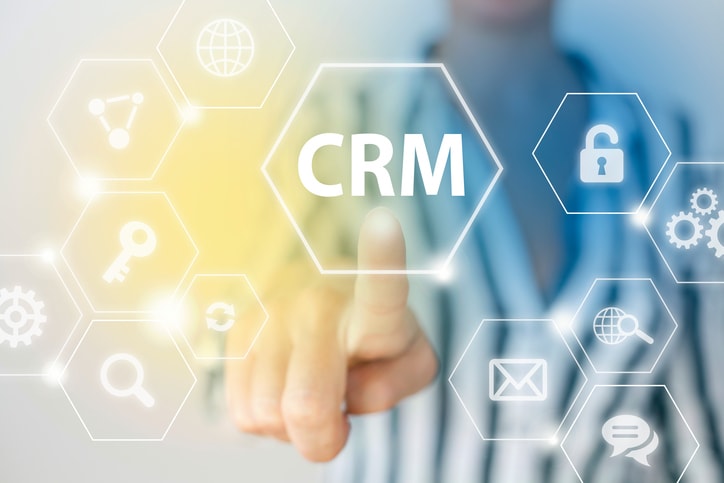By Milton Herman
The adoption of customer relationship management (CRM) software has been widespread. CRM giant Salesforce set up shop in 1999 and now reports over $8 billion in revenue as a public company. An entire market for CRM implementation and optimization had developed, with companies like Customer FX producing guides and videos for specific CRM platforms.
However, adoption is not close to 100 percent. Hubspot’s The State of Inbound 2016 survey reported that only 45 percent of sales reps store customer data in a CRM. Forty percent reported still using informal means like spreadsheets and email.
Informal means are the best option for early stage businesses, and hundreds of businesses thrive without a CRM. But if you’re a digital business that wants to scale and squeeze every attainable dollar form your pipeline, CRM software should be on your radar. Here the functions and features you’ll need to consider.
Core Functions of Customer Relationship Management
The first step for choosing a CRM partner is to understand the core functions. These are features that qualify the software as a CRM and should be compared across the different providers.
Digital contact management – A CRM converts the old Rolodex or spreadsheet into a living online system. This eliminates spelling errors or typos that occur when tracking everything by hand. CRMs also provide data about contacts, such as company size and industry, so you don’t have to go searching for information.
Task management/calendar reminders – A huge benefit of a CRM is the ability to make a to-do list and automate reminders for future tasks. Follows up calls, meetings and other sales nurturing tasks are not forgotten. This also allows teams to collaborate and divide accounts and tasks without conflict.
Basic reporting – Although it’s cumbersome and won’t scale, spreadsheets and project management apps can be used as a basic CRM. However, reporting basically requires a CRM; it’s also where CRMs really demonstrate their value. Financial forecasts, budget decisions and employee management are all assisted by a CRM’s ability to pull information and present it for viewers.
Must-have Feature: Integrations
Your business already has tools in place, from an e-commerce website to email marketing software or HR software. A CRM tool should not just be another tool that you login to, it needs to be a system of record for any customer-facing team. The best CRMs offer a wide range of integrations to support this. Some examples include:
Email/Communication – Your CRM needs to pull in emails from Gmail or Outlook, many CRM tools allow you to send emails directly from the platform as well. This creates a timely snapshot for anyone reviewing the account.
Document Management & Storage – Your sales team will be using templates, sending content assets and distributing contracts to be signed — it’s imperative that this data plays nicely with the CRM. For instance, Templafy, which allows companies to quickly create on-brand documents, integrates with Salesforce so documents can be sent directly and documents can be created via data passed from the CRM.
Billing/Accounting – A CRM won’t replace accounting software, however it does allow for more predictive reporting by showing information on deals currently in the pipeline. Make sure the accounting software is able to grab data from the CRM or vice versa.
Open API – Most CRMs have open APIs so you can set up your website, app or POS system to integrate directly. This means customer logs can automatically be created after a purchase or email sequences can be triggered outside of the CRM. This process won’t be easy; 49 percent of respondents to a Software Advice survey said integrating their CRM with other key technologies was a major or moderate challenge.
Must-have Function: Lead Lifecycle Optimization
Now that lead information is being automatically imported via integrations, the cumulative result of all these features is the ability to manage a prospect from an inbound or outbound lead all the way to the sale, no matter how long it might take. There are a few steps needed to do this:
1. Qualifying leads – The enhanced contact info allows companies to determine buyer profiles (i.e., the common traits shared by their most successful customers). Prospects that don’t meet these requirements can be automatically dismissed.
2. Automated sales & marketing campaigns – The process of simply calling a lead who requested more info and pushing the sale have been replaced with sophisticated sales and marketing funnels that siphon the right information at the right time. For instance, someone who subscribes to the blog with a title like “marketing coordinator,” will likely not be the final decision maker. However, this lead can be nurtured with marketing content that helps them do their job. Over time, they may show more interest and request a demo. At this point, the lead can be moved over for sales so they can earn the opportunity to meet with a director or executive. this software allows teams to complete this process without incessant calls and meetings.
3. Behavior tracking – A key part of the above process is the ability to track user actions. Perhaps a lead has downloaded several whitepapers and has reviewed the pricing page. This information can be reviewed to determine the level of intent that a lead actually has. Transactional (or triggered) emails can also be set up based on certain actions.
4. Completing the sale – Your CRM needs to facilitate a sale from start to finish. This is the most important qualification for CRM software. The tool should not only help you bring in more leads but also convert more leads and gain greater insight into won and lost opportunities. Take your time and compare software vendors closely to find the right solution.
As a former journalist, Milton Herman loves a good story. As customer success manager, he develops compelling customer narratives. He’s also a content strategist, writer and Slack evangelist. He’s passionate about sports, travel and learning. Follow him on Twitter. @MiltonDHerman







